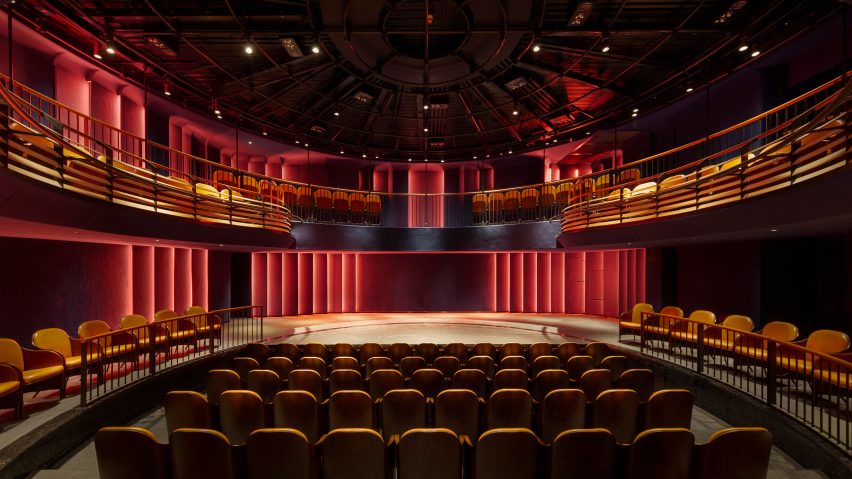
Revolving auditorium is showpiece of Boulevard theatre by SODA
A theatre has opened in London's Soho that can be completely reconfigured at the touch of a button.
The Boulevard theatre features stalls and a balcony that both revolve independently, along with a stage that moves up and down, making a wide variety of different configurations possible.
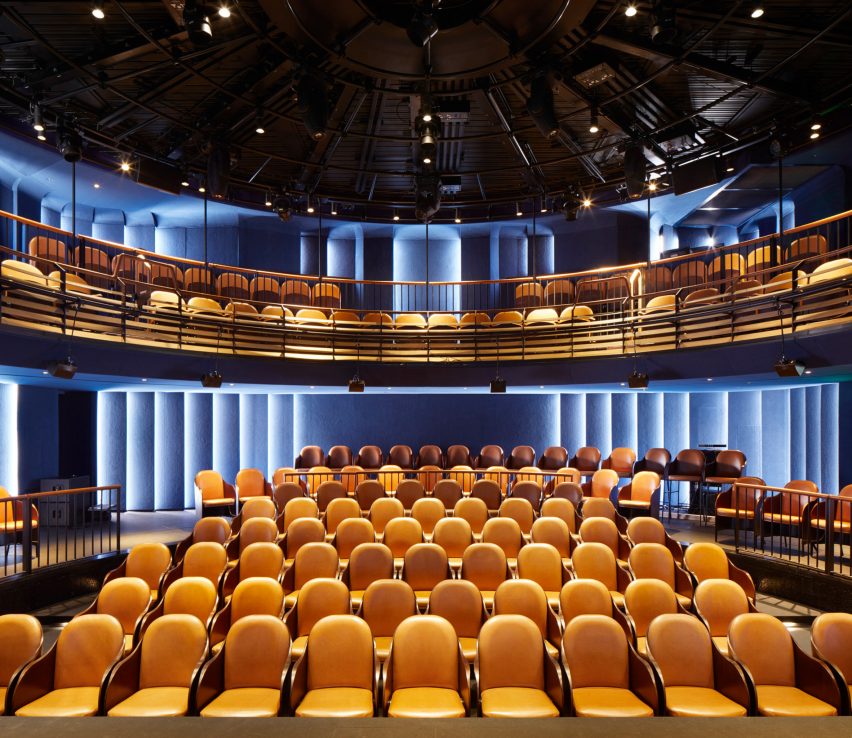
The entire project is designed by SODA, a London-based studio that works across architecture, interiors and graphic design. It forms part of a new development called Walker's Court, in the heart of Soho.
Behind the project is Fawn James of Soho Estates, whose grandfather Paul Raymond established the Raymond Revuebar, an infamous strip club that originally occupied part of the site.
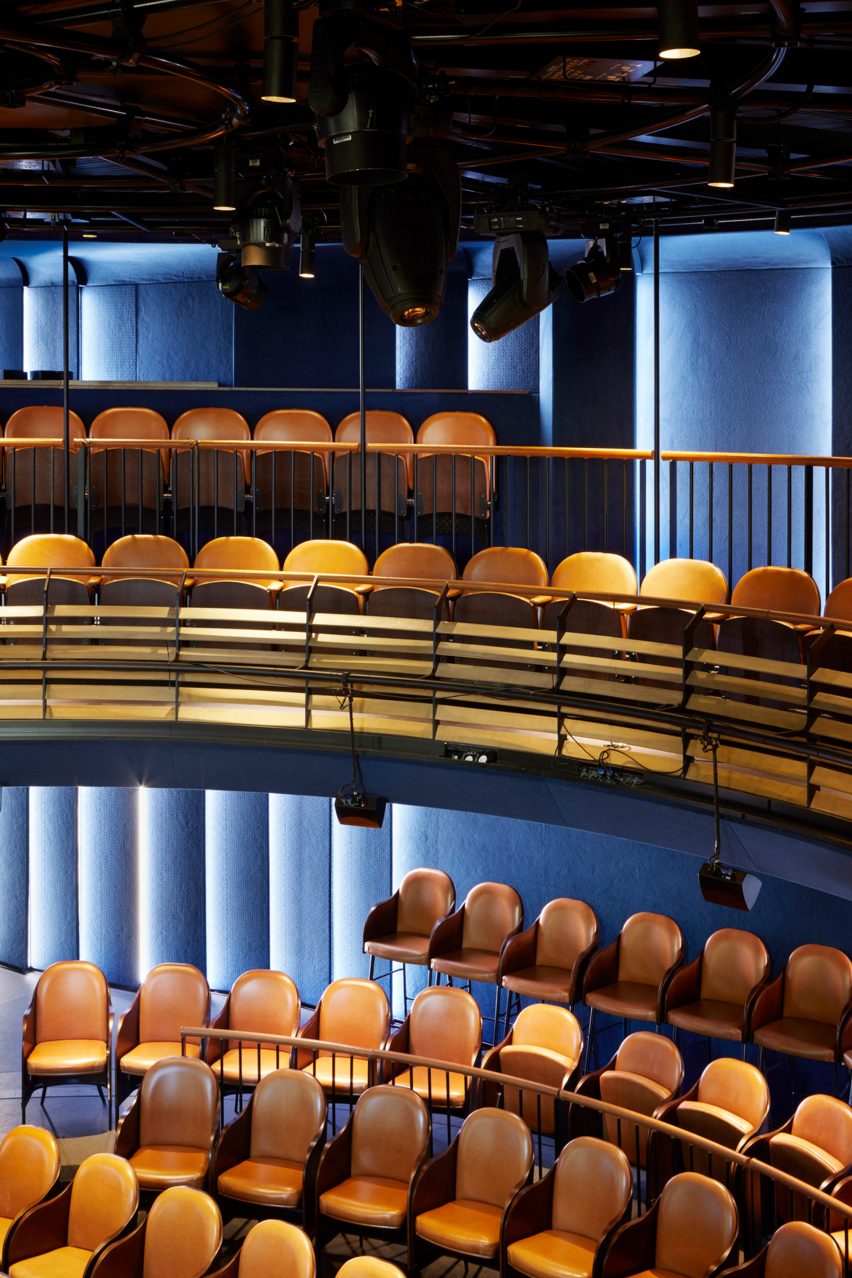
"For me it was all about celebrating my grandfather, my heritage and also Soho," she explained during a tour of the building.
"This site has played such an important role to the local history of our 'village' of Soho, so we knew it was vital for us to bring back a place for performance and entertainment."
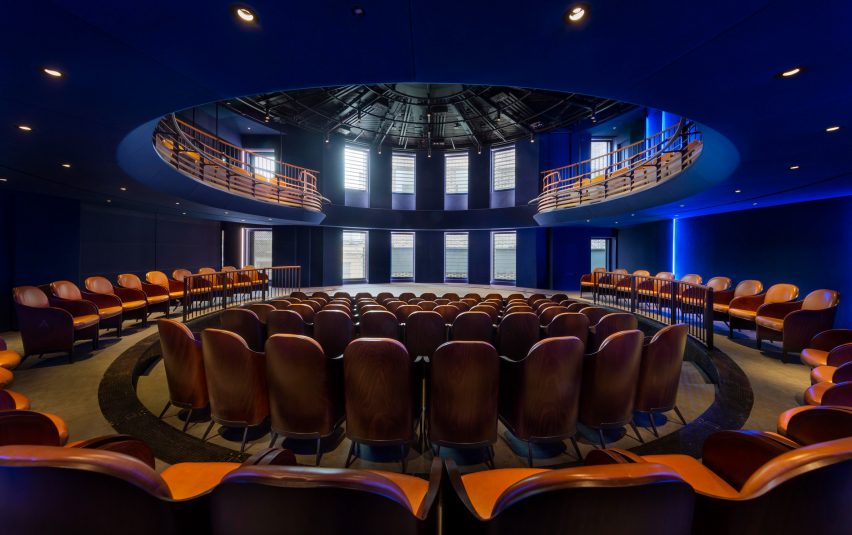
The Boulevard takes its name from a theatre that served as a sister venue to the Revuebar. It played host to a wide variety of performances, from traditional drama to erotica, and was also home to standup comedians The Comic Strip.
With the introduction of revolving elements, the new theatre can be even more versatile.
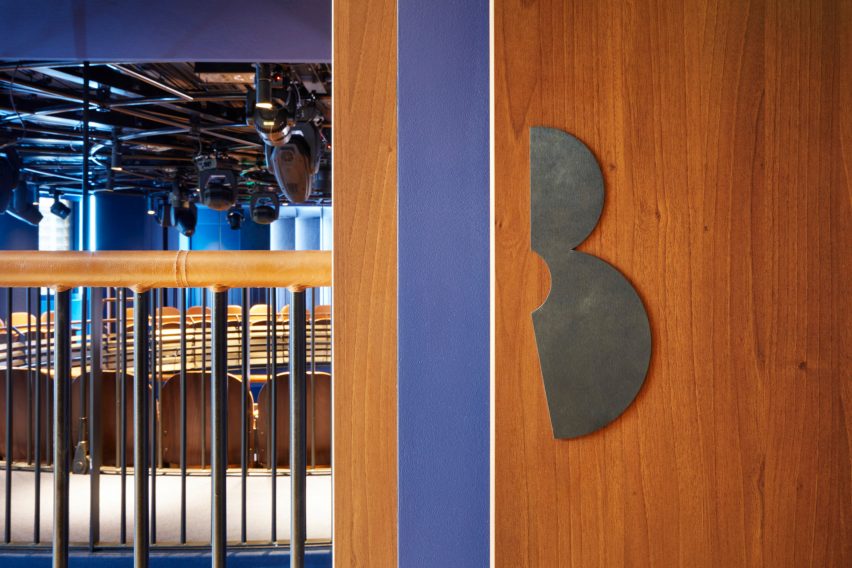
Soda worked with theatre specialist Charcoalblue to make the auditorium as functional as possible. The transformations all take less than 10 minutes, so the space can easily host three or four different types of performance in one day.
"One of the things that I really wanted was that element of surprise, because when you're in Soho you don't necessarily know what you're getting," James explained.
"Sometimes you could come to a show in the round, go downstairs grab a bite to eat, then come back up for the next show and feel like you're in a completely different room."
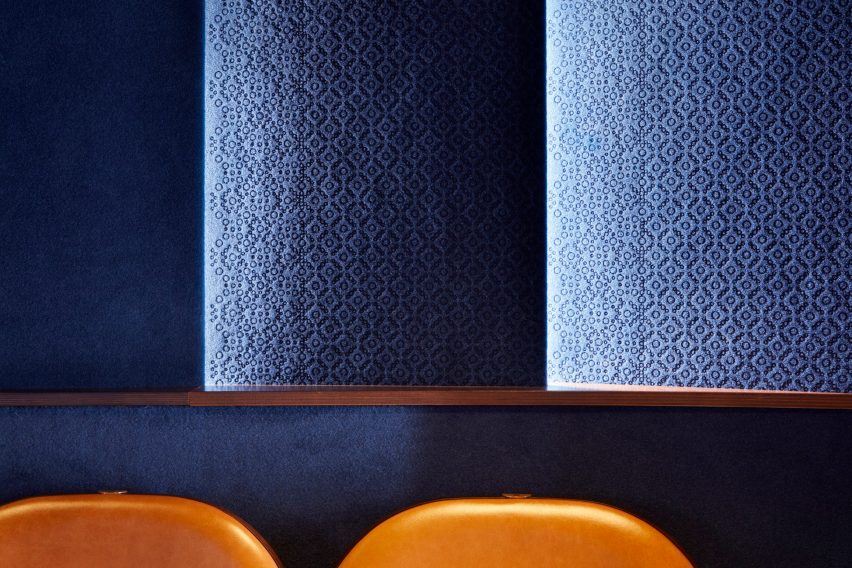
The stalls can be rotated by 360 degrees, while the balcony has a span of 270 degrees. There are also other elements to aid transformations, including blackout window blinds and moving acoustic screens.
Even the wood-framed leather chairs, developed with manufacturer Race Furniture, are designed to be stackable.
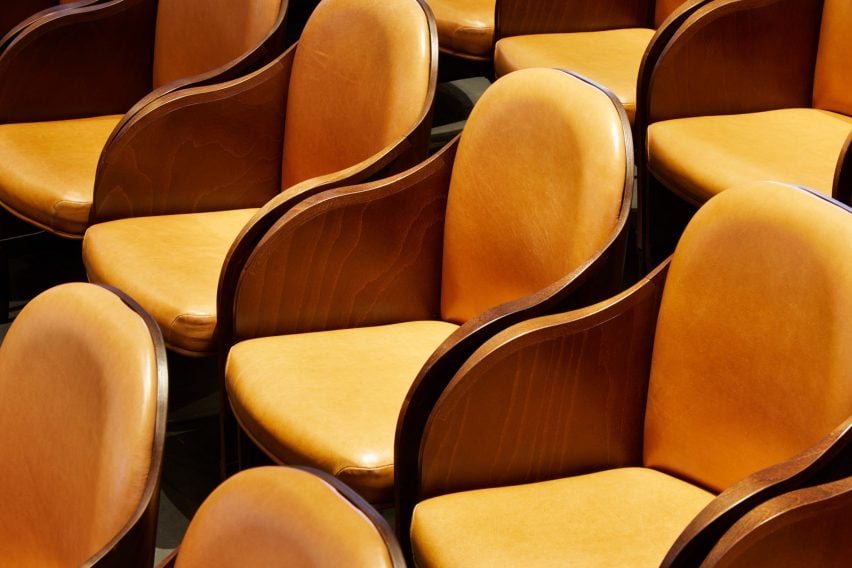
"We thought long and hard about how we could make stackable chairs that didn't look lightweight," explained Russell Potter, one of the two directors of Soda.
"We came up with the idea of horizontally stacking them, so they fold up and nest into each other."
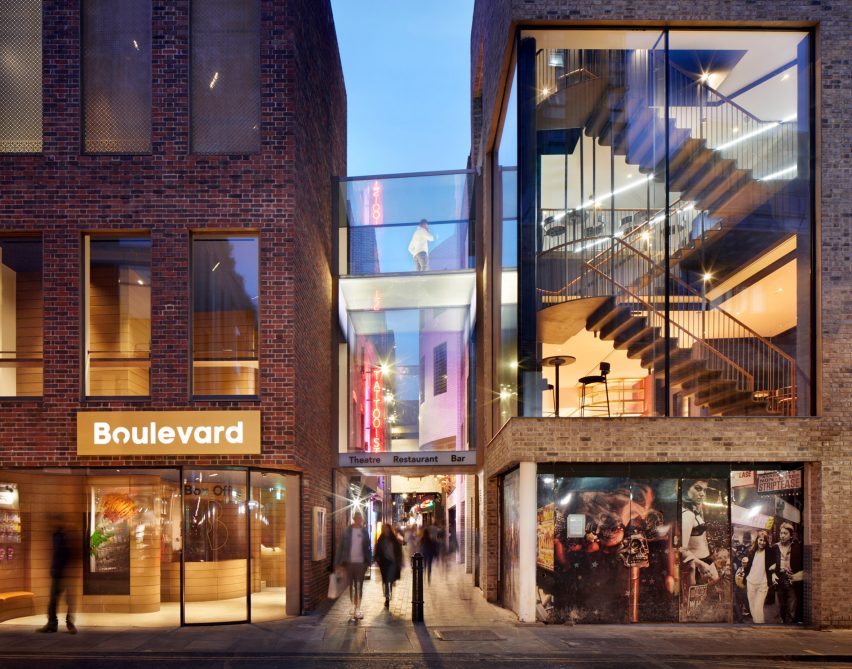
The theatre building spans Walker's Court, a narrow pedestrian street.
Visitors enter on one side of the street, climb a staircase, then cross over a glass bridge to reach the theatre bar and the entrance to the auditorium.
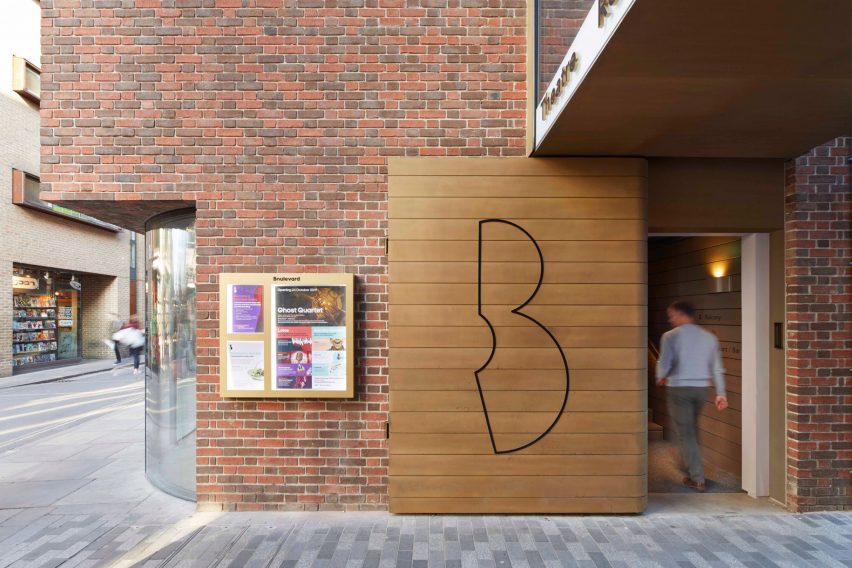
This glass bridge features an inlay of lace, in reference to a brothel previously located on this street.
The lace pattern is a recurring motif – it also features on the blue velvet panels in the theatre and on the filigree screens that shade windows.
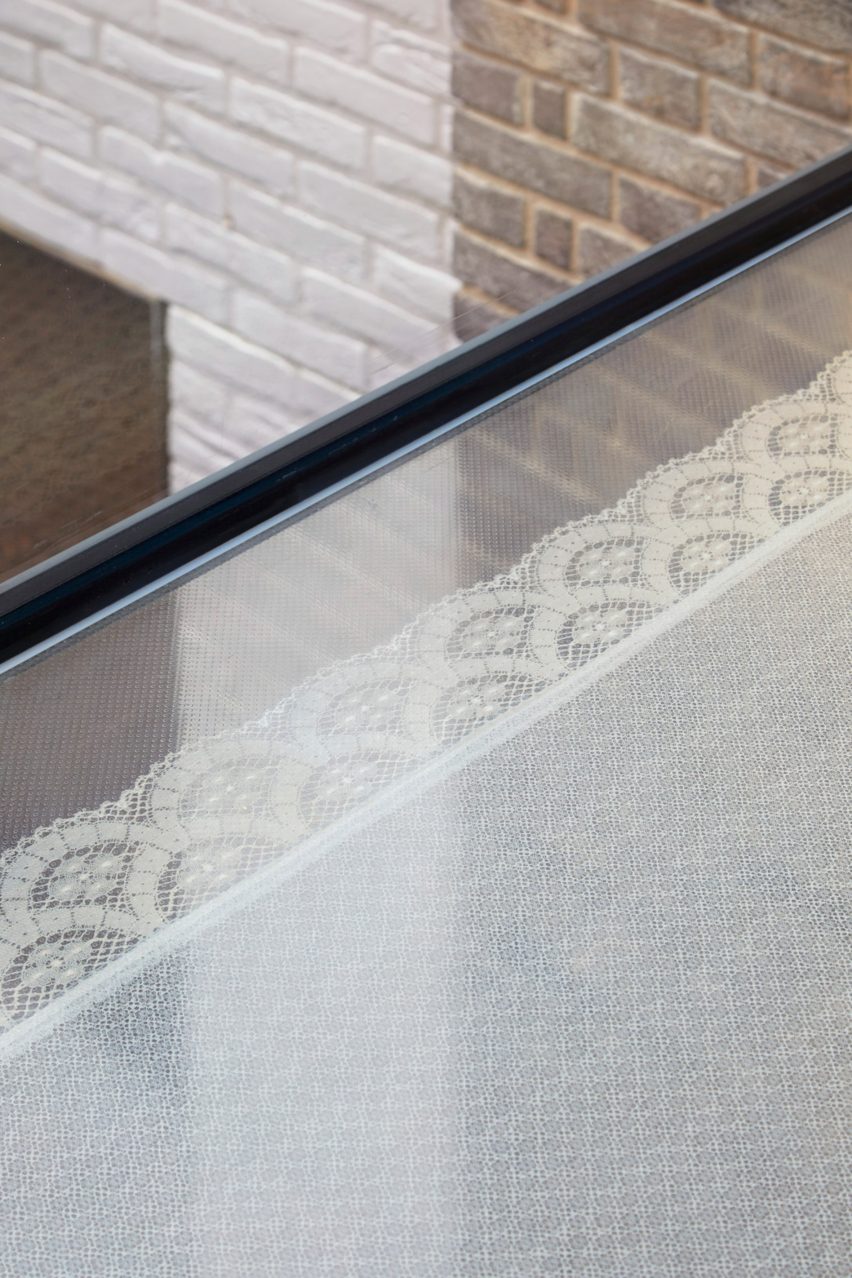
"The brothel used to have these net curtains in the window with a red light behind," said Potter.
"We thought, if you can't have a bit of fun in Soho, where can you? So it's a version of that."
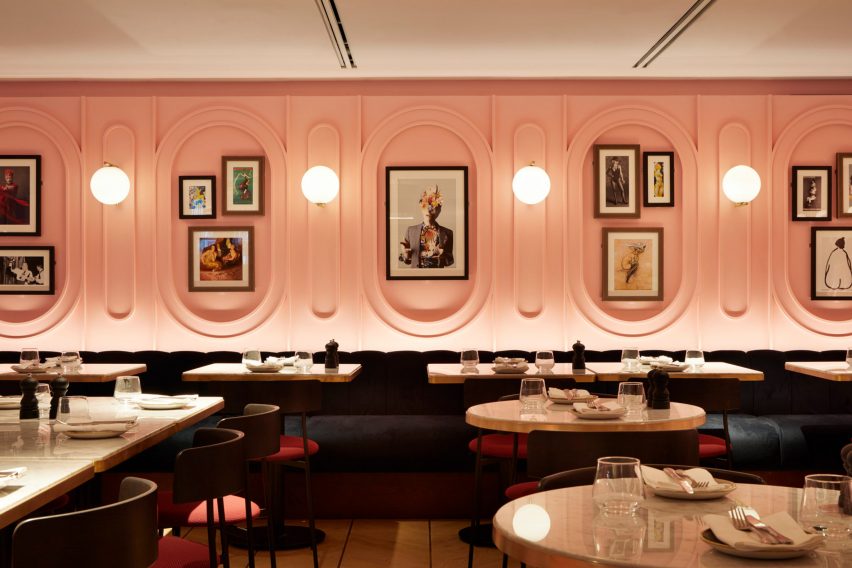
The bar and restaurant is an art-deco-inspired space featuring pink panelled walls, marble surfaces, brass lighting, and leather and velvet upholstery.
There are also subtle references here to the Boulevard logo, also designed by Soda, in this space. The shape of the B is picked up in the double-curved edges of the bar and drinks counters.
A rolled steel staircase ascends another floor to the theatre auditorium on the level above.
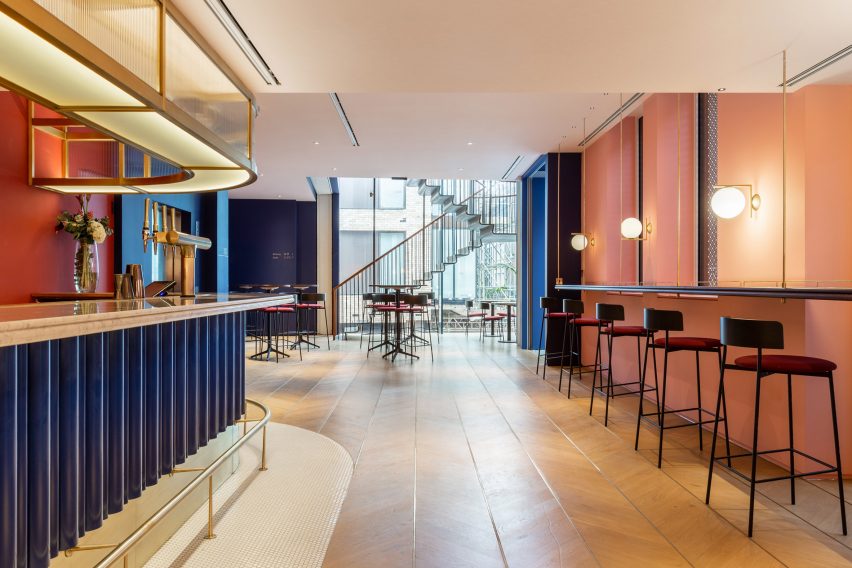
The rest of the Walker's Court development is still under development. It includes the revival of legendary club Madame JoJo's, plus apartments, shops and office space.
One of the new office spaces sits directly behind a remake of the original Raymond Revuebar neon sign, produced by God’s Own Junkyard.
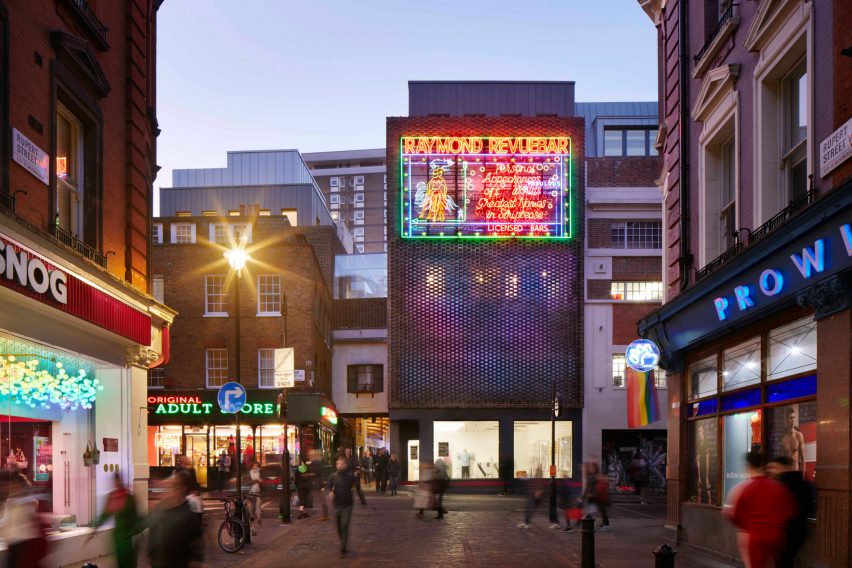
Soda chose a variety of different bricks to give diversity to the building's new facades.
However the original facade of the Revuebar building remains in place, visible behind a screen of perforated brickwork. By night, lighting animates these two overlapping surfaces.
Photography is by Jack Hobhouse unless otherwise stated. Main image is by Tom Lee.